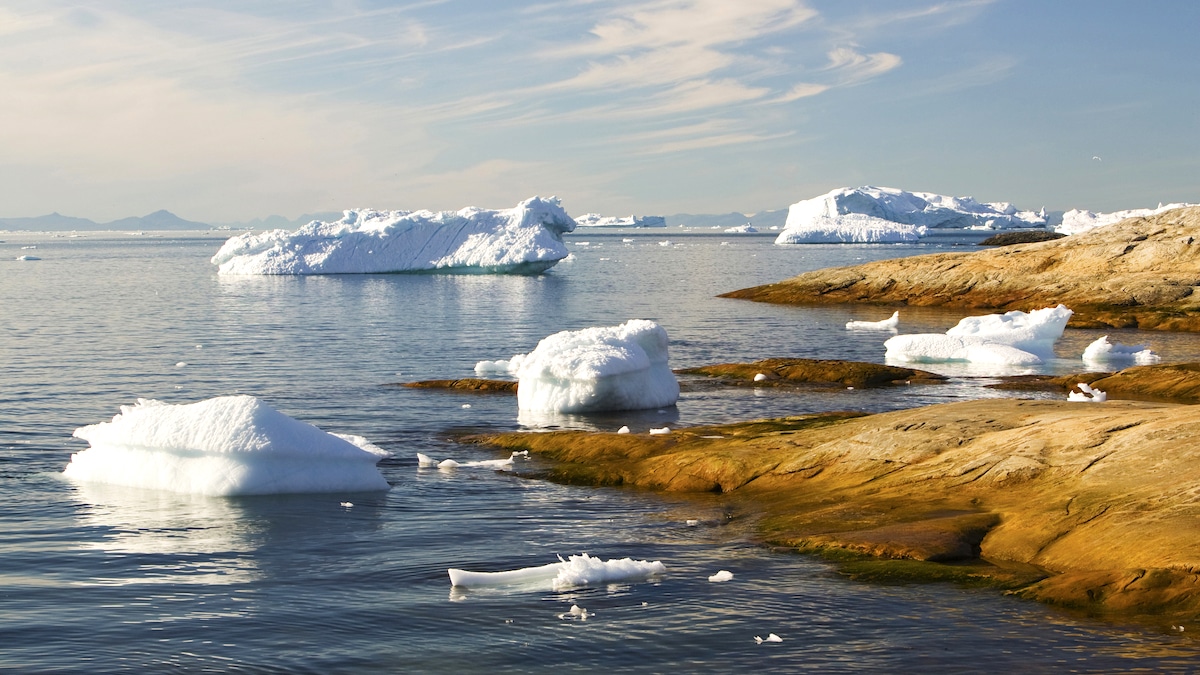

Both the North and South polar regions saw anomalous heat on Friday.
Temperatures in parts of Antarctica were more than 70 degrees Fahrenheit warmer than average, while temperatures in parts of the Arctic were more than 50 degrees Fahrenheit warmer than average. This is notable because the Arctic is entering its spring, while Antarctica is approaching its autumn.
“They are opposite seasons. You don’t see the north and the south (poles) both melting at the same time,” National Snow and Ice Data Center scientist Walt Meier told AP News. “It’s definitely an unusual occurrence.”
The heat wave in Antarctica was first reported by The Washington Post on Friday. Temperatures in parts of Eastern Antarctica have been around 70 degrees Fahrenheit above average for three days. This means that instead of a chilly minus-50 or minus-60 degrees Fahrenheit, they have been a relatively balmy zero or 10 degrees Fahrenheit.
This has led to broken records. At Vostok, in the middle of the eastern ice sheet, temperatures reached zero degrees, a record high for the month of March. High temperatures during the month are usually around negative 63 degrees Fahrenheit. At Concordia research station, temperatures reached an all-time high of 10 degrees Fahrenheit. The average high for March there is negative 56 degrees Fahrenheit. The Antarctic continent on Friday was about 8.6 degrees Fahrenheit above its baseline temperature from 1979 to 2000, AP News reported.
“It is impossible, we would have said until two days ago,” researcher Stefano Di Battista tweeted. “From today (March 18) the Antarctic climatology has been rewritten.”
It is impossible, we would have said until two days ago. From today (March 18) the Antarctic climatology has been rewritten
— Stefano Di Battista (@pinturicchio_60) March 18, 2022
At Concordia the high recorded -12.2 °C and broken the absolute maximum set on 17 December 2016 (-13.7 °C)
At Vostok the provisional high is -20.3 °C 👇 pic.twitter.com/PYm48XdHLh
In the Arctic, meanwhile, unusually warm temperatures were recorded in Greenland and Franz Josef Land, while records were breached in Norway, The Guardian reported. Overall, the region was six degrees Fahrenheit warmer than the 1979 to 2000 average on Friday, AP News reported.
Experts say that the Antarctic heat wave is not necessarily due to the climate crisis, but instead a simple anomaly. However, if incidents like this repeat, that calculation may change.
“Not a good sign when you see that sort of thing happen,” University of Wisconsin meteorologist Matthew Lazzara told AP News.
There are several local weather phenomena immediately responsible for the Antarctic warming, The Guardian reported, including strong winds from Australia and an atmospheric river.
“These are rivers of moisture in the air that bring warm and moist air to certain locations, and there was a really significant one occurring in that region over Antarctica,” Monash University climate scientist professor Julie Arblaster told The Guardian.
However, Université Grenoble Alpes in France polar meteorologist Jonathan Wille told The Washington Post that climate change may have “load[ed] the dice” to make this atmospheric river event more likely. He is currently studying whether the climate crisis might make atmospheric rivers more frequent or intense.
“We do believe they will become more intense because it just simple physics… but the details, we’re still trying to figure that out. It would be very difficult to say that there’s not a climate change fingerprint on an event like this,” he told The Washington Post.
And just to leave this satellite image from today of the atmospheric river spreading clouds over East Antarctica pic.twitter.com/OdAy1Li6sS
— Dr. Jonathan Wille (@JonathanWille) March 17, 2022
The Arctic is already warming two to three times faster than the global average because of the climate crisis, AP News noted. There is also currently warm Atlantic air coming off of Greenland.

 233k
233k  41k
41k  Subscribe
Subscribe 